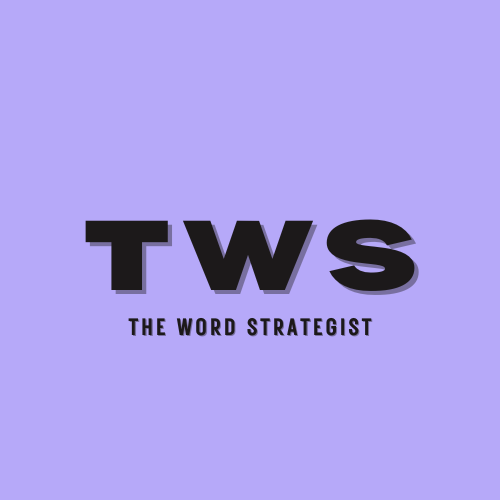Are your company’s budget meetings cooperative and goal-oriented, or is each department head fighting for their piece of the pie? If your company is like many, it’s probably more like the latter, and in far too many companies, marketing is seen as an afterthought — an expense rather than an investment.
So, how much should businesses allocate to marketing, and where should they focus their budgets? The answer depends on a number of factors, including industry, company size, and growth stage.
In this blog post, we’ll break down recommended marketing spend by industry and the best channels to allocate your budget for maximum returns on investment (ROI).
What is marketing?
Most of my readers are business savvy, so you probably have a good idea of what marketing entails. But let’s first say that marketing isn’t just an expense. It’s an investment in brand awareness, customer acquisition, and revenue growth.
Marketing isn’t advertising, although advertising falls under marketing. It’s the same with social media, and far more.
If you aren’t the seven Ps of marketing, which include:
- Product — What does your company sell? What makes it unique in your market?
- Price — Calculate your net cost of goods and add the profit margin you hope to achieve.
- Place — Do you sell online, in brick-and-mortar stores, somewhere else, or a combination?
- Promotion — This is what most people think of as marketing. Promotion is about getting the word out through a mix of strategies, including search engine optimization (SEO), paid advertising, content marketing, social media marketing, direct marketing, and more.
- Physical evidence — Physical evidence is about tangibility. It might include retail layouts, branding, business cards, events, and anything that might enable a prospect to experience your product with their own senses.
- People — Traditionally, “people” centered around customer service. This category is all about making it easier to engage with customers, both before and after making a sale. Today, chatbots might fall under the people category.
- Process — Work toward a frictionless buying process.
How much should you spend on marketing?
A prospect recently asked me how much their company should spend on marketing. I told them around 30% of their total revenue. A different prospect asked the same question, and my answer was between 5%-10% of their total revenue. Why such dramatic differences?
My answers weren’t arbitrary — far from it. Unfortunately, there’s no easy answer to how much you should spend on marketing. It all depends on what you sell, how long you’ve been in business, goals, and existing marketing share.
That said, most businesses average allocating about 12% of their annual revenue on marketing.
Not surprisingly, companies in growth mode should spend more and established brands can get away with spending less. Some industries are more competitive and some less so.
- Startups & New Businesses — 10-20% of revenue (focus on brand awareness & lead generation)
- Established B2B Companies — 5-10% of revenue (focus on lead nurturing & retention)
- Established B2C Companies — 10-12% of revenue (focus on customer acquisition & engagement)
Marketing budget by industry
As noted above, the average company spends about 12% of their revenue on marketing. But, is yours an average company? What is an average company?
Here’s what an average company looks like:
- Has been in business for roughly 7-15 years, so neither a startup nor mature
- Has About 250-500 employees
- Generates approximately $50M – $200M in annual revenue
- Maintains a 5-10% net profit margin
- Grows approximately 3-5% a year
- Spends 3-5% on R&D
- Operates in a moderately competitive industry, such as SaaS, manufacturing, professional services, retail
- Maintains a steady market share
- Retains about 3/4ths of their customers annually
- Experiences a 15-20% annual employee turnover rate
- Competes on price and service instead of innovation
- Is a trend follower more than a trend setter
- Gains most of its customers through SEO, paid ads, and referrals
Of course, talking about averages is very misleading. Should a tech company have the same marketing budget as an e-commerce clothing store? Not usually. Margins, overhead, goals, market segments, etc., should be factored in.
How do your marketing expenditures compare to others in your industry?
Technology & SaaS
Recommended budget: 10-15% of revenue
Where tech companies spend:
- SEO & content marketing (drives organic traffic & leads)
- PPC & paid social sds (boosts user acquisition)
- Product-led growth strategies (free trials, demos, webinars)
- Referral & affiliate marketing (leverages word-of-mouth growth)
Retail & e-commerce
Recommended budget: 12-20% of revenue
Where retail and e-commerce businesses spend:
- Paid social ads (Facebook, Instagram, TikTok) (drives impulse purchases)
- Influencer marketing (boosts credibility & trust)
- Email & SMS marketing (increases retention & repeat purchases)
- SEO & product page optimization (enhances discoverability & conversions)
Professional services (law, consulting, finance)
Recommended budget: 5-10% of revenue
Where professional services firms spend:
- SEO & local search optimization (drives high-intent leads)
- LinkedIn ads & networking events (targets business professionals)
- Thought leadership content & webinars (builds credibility)
- Referral programs (leverages existing client base)
Healthcare & wellness
Recommended budget: 7-12% of revenue
Where the healthcare and wellness industry spends:
- SEO & local listings optimization (ensures visibility in local searches)
- Social media & patient education content (builds trust & engagement)
- Email marketing & CRM automation (nurtures patient relationships)
- Paid search ads (Google, Bing) (targets patients searching for services)
Hospitality & restaurants
Recommended budget: 8-15% of revenue
Where hospitality and restaurants spend:
- Local SEO & Google My Business (drives foot traffic & reservations)
- Social media marketing & influencer partnerships (creates visual appeal)
- Loyalty programs & email marketing (boosts repeat customers)
- Paid ads (Instagram, Google Ads, Yelp promoted listings) (attracts new guests)
Does this mean that thought leadership only matters to professional services firms, or that hospitality and restaurant organizations don’t spend on SMS marketing? Not at all. In fact, a big part of marketing is attempting to stand out by doing what your competitors aren’t.
Optimizing your marketing budget for ROI
No matter your industry, an effective marketing budget requires smart budgeting, flexibility, and continuous optimization. Here’s how to ensure your dollars work hardest for you:
Invest in measurable channels – Prioritize digital strategies with clear ROI tracking
Test & adjust regularly – Use A/B testing to refine ad spend, content, and promotions
Focus on customer retention – It costs less to retain a customer than acquire a new one
Leverage automation & AI – Streamline marketing efforts to improve efficiency
Align your budget with business goals – Ensure your marketing spend supports revenue targets
Final thoughts
Your marketing budget isn’t one-size-fits-all, and what fits today may not fit tomorrow. It should be tailored to your industry, growth goals, and target audience. By strategically investing in the right channels, and having the flexibility to measure and adjust, businesses can drive sustainable growth and measurable ROI.
Need help optimizing your marketing spend? Let’s talk!

I have more than 15 years of experience elevating products and brands through world-class copy and SEO content


